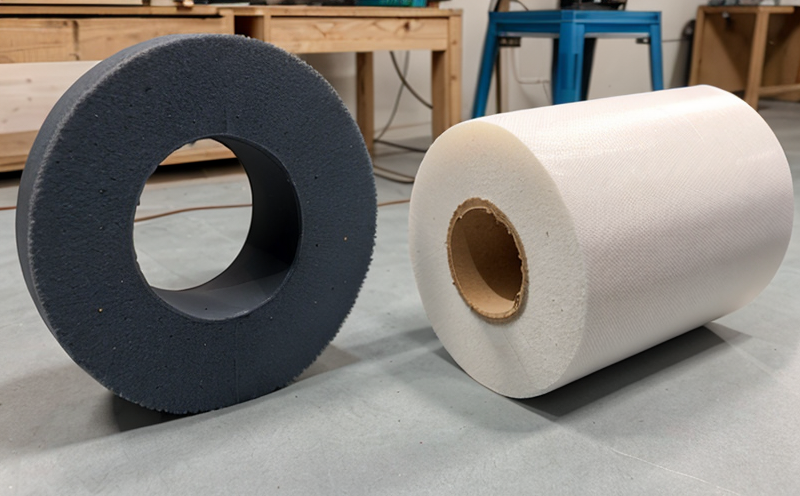ISO 12460 Formaldehyde Emission Testing from Wood Based Panels
The ISO 12460 standard is a critical component in the quality control of wood-based panels, particularly those used in furniture manufacturing. This testing method ensures that formaldehyde emissions remain within safe levels, aligning with international health and safety standards. The process involves controlled exposure of samples to ensure accurate measurement of formaldehyde release under specific conditions.
Formaldehyde is a common additive in wood-based panels like particleboard and medium-density fiberboard (MDF), which are used extensively in furniture construction due to their cost-effectiveness, versatility, and strength-to-weight ratio. However, the release of formaldehyde from these materials can pose health risks if not managed properly.
The ISO 12460 testing method is designed to simulate real-world conditions that wood-based panels would encounter in furniture applications. It involves placing samples inside a climate-controlled chamber where temperature and humidity are carefully regulated. The sample is exposed to these conditions for a specified duration, during which the formaldehyde emissions are continuously monitored.
The testing protocol specifies precise specimen preparation methods, including dimensions and surface area requirements. This ensures that all test results are comparable and reflective of actual material performance in furniture applications. The apparatus used includes chambers with controlled environmental parameters and sensitive analytical equipment to detect even minute levels of formaldehyde emissions.
Acceptance criteria for this testing method are stringent and vary based on the intended use of the wood-based panels. For instance, products destined for indoor residential environments have more stringent limits than those used in industrial or commercial settings. Compliance with these standards is crucial for manufacturers to ensure their products meet regulatory requirements and maintain a safe working environment.
| Test Parameter | Description |
|---|---|
| Sample Size | The minimum dimensions for the sample are specified in the ISO 12460 standard. |
| Environmental Conditions | Temperature and humidity levels are strictly controlled within predefined ranges during testing. |
| Emission Measurement | Sensitive instruments measure formaldehyde emissions continuously throughout the test period. |
Industry Applications
- Furniture manufacturers ensuring compliance with international standards for indoor use products.
- Suppliers of wood-based panels seeking to verify the safety and quality of their materials.
- R&D teams developing new formulations or processes to reduce formaldehyde emissions.
- Regulatory bodies enforcing strict limits on formaldehyde emissions in consumer goods.
Environmental and Sustainability Contributions
The ISO 12460 testing method plays a vital role in promoting environmental sustainability by ensuring that furniture products are safe for consumers. By adhering to these standards, manufacturers can reduce the risk of formaldehyde-related health issues, which is particularly beneficial for individuals with respiratory sensitivities or allergies.
Moreover, this testing contributes to broader sustainability goals by encouraging the use of safer materials and processes in the furniture industry. This not only enhances consumer safety but also supports the development of more sustainable manufacturing practices that minimize environmental impact.
The standard is part of a larger effort to ensure that products meet stringent international health and safety standards, which can lead to improved overall quality control across the supply chain. By focusing on formaldehyde emissions, this testing method helps manufacturers align their product offerings with global regulatory frameworks, thus fostering trust among consumers.
Use Cases and Application Examples
- Furniture Design and Development: Manufacturers use ISO 12460 testing to ensure that new designs meet formaldehyde emission standards before they reach the market.
- Safety Compliance: Regulatory bodies rely on this test to enforce limits on formaldehyde emissions, ensuring compliance with international safety regulations.
- Supply Chain Management: Suppliers use ISO 12460 testing to verify that raw materials used in furniture production meet the required standards.
- R&D Innovation: Researchers and engineers leverage this test to explore new ways of reducing formaldehyde emissions, enhancing product safety.
| Test Scenario | Expected Outcomes |
|---|---|
| New furniture line launch | Achieve compliance with ISO 12460, ensuring safe indoor use. |
| Supply chain audit | Verify that raw materials meet formaldehyde emission standards. |
| R&D project on safer adhesives | Evaluate the effectiveness of new adhesive formulations in reducing emissions. |





